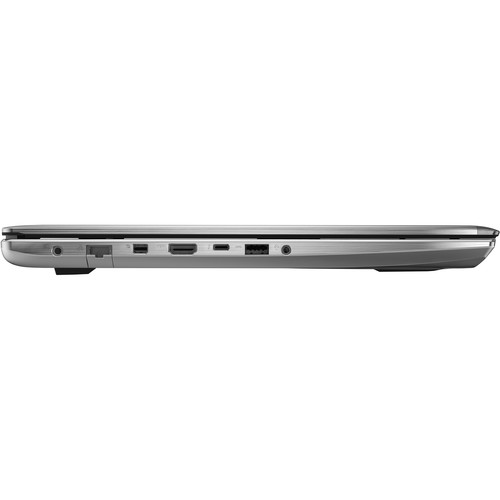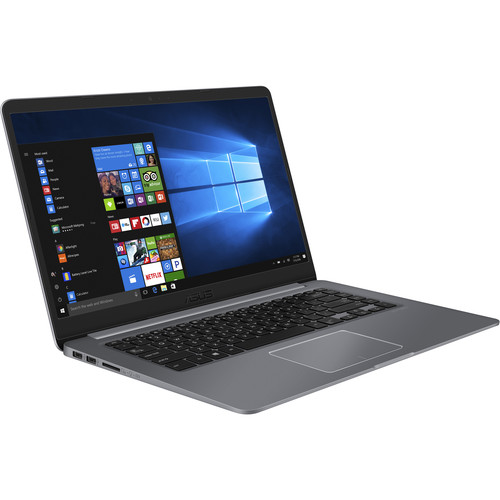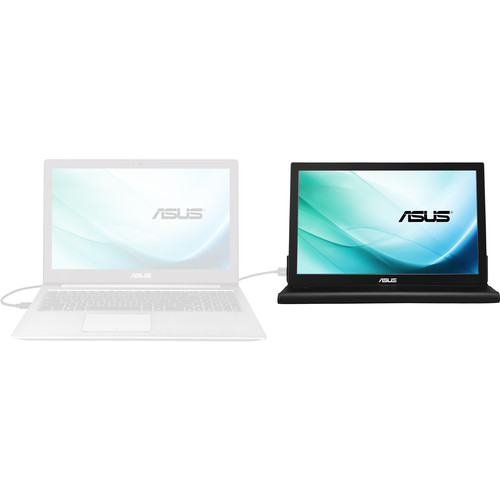Description
ASUS GL702VM overview
The 17.3″ Republic of Gamers Strix GL702VM Notebook from Asus is a powerful system packed with multiple features designed for avid PC gamers. Equipped with a 2.8 GHz Intel Core i7-7700HQ Quad-Core processor, 16GB of DDR4 RAM, and an NVIDIA GeForce GTX 1060 graphics card with 6GB of GDDR5 VRAM, the ROG GL702VM can tackle everything from everyday tasks to gaming with demanding visuals. It’s also capable of running VR applications and games for a different level of computing. To further upgrade this system’s performance, you can install another 16GB RAM module for a max capacity of 32GB.
For storing your photos, videos, games, and more, the ROG GL702VM has a 128GB solid-state drive and a 1TB hard drive. The SD card reader is convenient for transferring files between mobile devices, and there are plenty of connectivity options including USB 3.0, USB Type-C, and Thunderbolt 3. Other integrated features include 802.11ac Wi-Fi, Bluetooth 4.0, a webcam, HDMI and Mini DisplayPort outputs, and combo audio in/out jack. The installed operating system is Windows 10 (64-bit).
NVIDIA GeForce 10-Series Graphics Card
NVIDIA’s GeForce GTX 10-series graphics cards can deliver up to a 40% increase in performance over the previous generation. Not only are they powerful, they can deliver similar performance to their desktop counterparts with a slight performance difference. This changes mobile gaming, allowing you to max out your game’s visuals settings so you can enjoy it at its best. Furthermore, 10-series graphics cards are VR ready so plug in your favorite headset for a new computing experience.
NVIDIA G-SYNC Display
NVIDIA G-Sync technology syncs the display’s refresh rate with the graphics card’s frame rate output to reduce stuttering, screen tearing, and input lag for a more responsive and lag-free experience.
DDR4 RAM
DDR4 memory runs at higher speeds to delivers faster performance compared to its predecessor DDR3. With it, your system will achieve better performance overall.
ROG Gaming Center
ROG Gaming Center gives you access to multiple features such as system information, macros, audio settings, and more.
Thunderbolt 3
Thunderbolt 3 is a hardware interface that utilizes the reversible USB Type-C connector. Doubling the speed of its predecessor, Thunderbolt 3 features a maximum throughput of 40 Gb/s when used with compatible devices. The connector also transmits data via USB 3.1 at up to 10 Gb/s, and dual-bandwidth DisplayPort 1.2 allows you to connect two 4K displays simultaneously. Additionally, you can daisy chain up to six devices from a single Thunderbolt 3 port.
Windows 10
Start Menu
After its hiatus in Windows 8, the Start Menu has returned. Utilizing a combination of the traditional menu system and Windows 8’s Live Tiles, the improved Start Menu gives you more information at a glance, showing notification information alongside your applications and other pinned items.
Cortana
Microsoft’s digital personal assistant, Cortana, can answer your questions with information gleaned from both your device and the Internet at large. You can type or even talk with her, if your system has a microphone. Using her Notebook, Cortana keeps track of your needs and wants, and she learns over time to improve her information-gathering skills.
Microsoft Edge
After nearly 20 years, Microsoft has finally replaced its Internet Explorer web browser. With Microsoft Edge, users can write directly on web pages and share notes with friends and colleagues. It also improves the online reading experience by adding a distraction-free mode and read-it-later functionality. Edge also has built-in Cortana integration; you can have her help you find a restaurant, make a reservation, and pull up directions without leaving your browser.
Windows Store
For Windows 10, Microsoft has unified the Windows Store. Now, apps for PCs, tablets, and phones will all be accessible from one place. And with support for Universal Apps, one version of an app can work across all your compatible devices automatically.
Windows Continuum
Windows 10 was designed for a variety of screen sizes and input styles, and with its Continuum feature, it automatically adapts to fit your needs. A Windows 10 tablet on its own requires a touch-centric approach, but attaching a mouse and keyboard will shift everything to a more traditional interface. You can even attach an external monitor to your Windows 10 phone for a near-desktop experience. But it’s not just the operating system; Windows Universal Apps take advantage of Continuum as well.
Xbox on Windows 10
Gaming is a big focus of Windows 10. Xbox integration allows for PC players to match up against Xbox One players on supported games, and if you have an Xbox One, you can even stream compatible titles to your PC. Native support for recording with the new Game DVR feature makes it easy to capture and share your gameplay. The new DirectX12 takes better advantage of multi-core processors, giving games a performance boost, even on older hardware. Windows 10 also features native support for virtual reality headsets, such as the Oculus Rift.
















